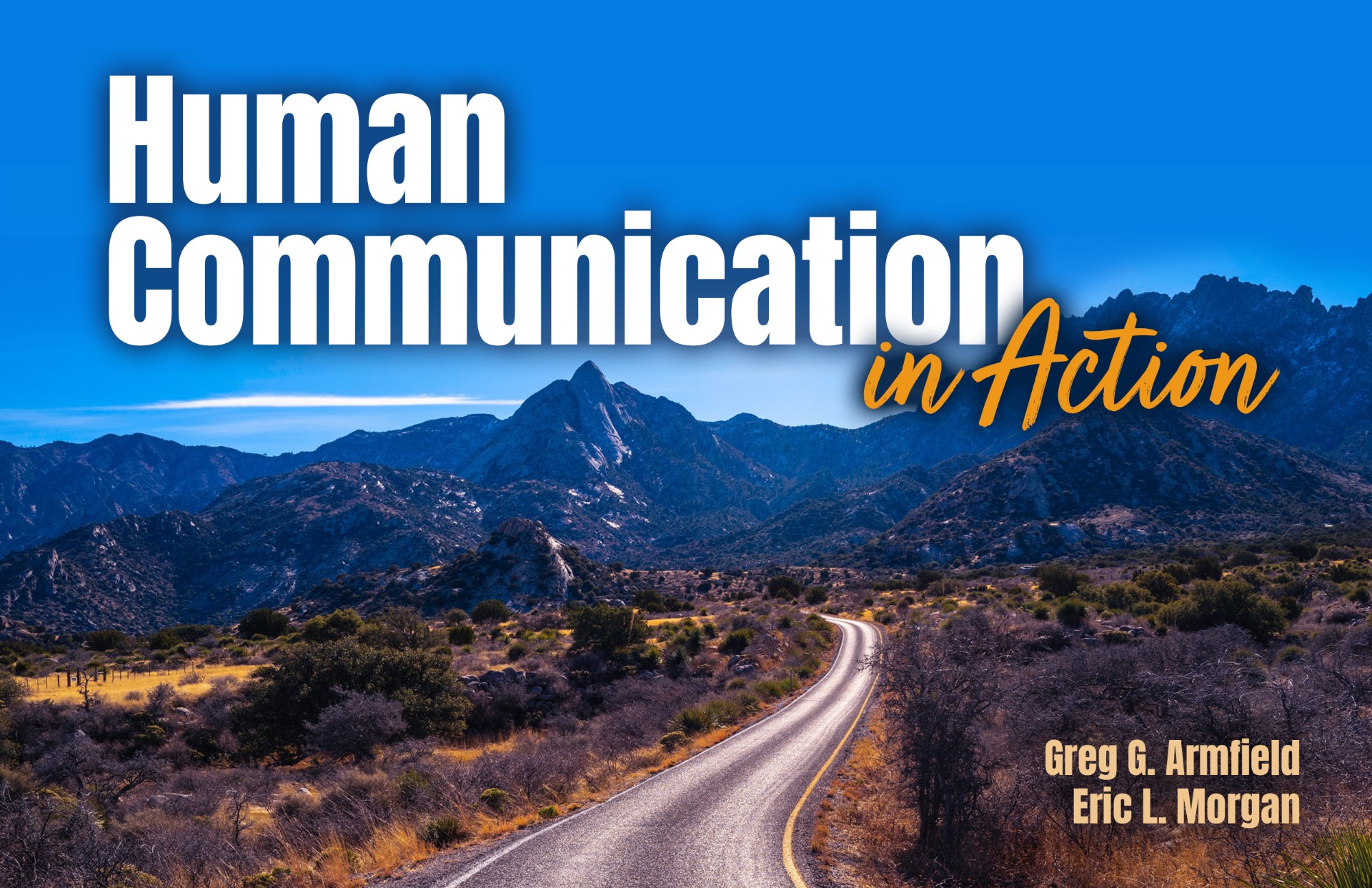Human Communication in Action
Author(s): Greg G. Armfield , Eric Lee Morgan
Edition: 10
Copyright: 2025
Human Communication in Action provides students with a valuable resource that can be used beyond the classroom by bringing together leading innovative scholars of Communication as contributors for this human communication textbook. Each unit presents overarching concepts of communication in an easy-to-read and practical manner. The first unit begins with a discussion of human communication fundamentals, ethics, verbal communication, nonverbal communication, and culture and communication. The second unit is dedicated to the art of public speaking and listening. The third unit addresses several contexts of interpersonal communication including relationship development and maintenance, technology and relationships, and interpersonal conflict management. The fourth unit explores organizational and group communication addressing organizational culture, structure, socialization, conflict management, group development, decision making, and leadership. The final unit treats the study of communication in a variety of contexts. This unit begins with persuasive communication and moves into discussion of deception, ethics and lying, heath communication, and digital literacy. A variety of exercises and group activities corresponding to each unit and section are included to assist in knowledge acquisition.
Chapter 1: Fundamentals of Human Communication
Chapter 2: Communication and Ethics
Chapter 3: Communication and Listening
Chapter 4: Verbal Communication
Chapter 5: Nonverbal Communication
Chapter 6: Public Speaking
Chapter 7: Speech Building
Chapter 8: Delivery and Outlining
Chapter 9: Persuasive Speaking
Chapter 10: Persuasion
Chapter 11: Interpersonal Communication
Chapter 12: Relational Conflict
Chapter 13: Culture and Communication
Chapter 14: Our Identities and Our Communication
Chapter 15: Organizational Communication
Chapter 16: Organizational Communication and Conflict Management: A Focus on Practical Skills
Chapter 17: Leadership Communication
Chapter 18: Small Group Communication
Chapter 19: Strategic Communication and Social Media
Chapter 20: Health Communication
Chapter 21: Deceptive Communication and the Ethics of Lying
Human Communication in Action provides students with a valuable resource that can be used beyond the classroom by bringing together leading innovative scholars of Communication as contributors for this human communication textbook. Each unit presents overarching concepts of communication in an easy-to-read and practical manner. The first unit begins with a discussion of human communication fundamentals, ethics, verbal communication, nonverbal communication, and culture and communication. The second unit is dedicated to the art of public speaking and listening. The third unit addresses several contexts of interpersonal communication including relationship development and maintenance, technology and relationships, and interpersonal conflict management. The fourth unit explores organizational and group communication addressing organizational culture, structure, socialization, conflict management, group development, decision making, and leadership. The final unit treats the study of communication in a variety of contexts. This unit begins with persuasive communication and moves into discussion of deception, ethics and lying, heath communication, and digital literacy. A variety of exercises and group activities corresponding to each unit and section are included to assist in knowledge acquisition.
Chapter 1: Fundamentals of Human Communication
Chapter 2: Communication and Ethics
Chapter 3: Communication and Listening
Chapter 4: Verbal Communication
Chapter 5: Nonverbal Communication
Chapter 6: Public Speaking
Chapter 7: Speech Building
Chapter 8: Delivery and Outlining
Chapter 9: Persuasive Speaking
Chapter 10: Persuasion
Chapter 11: Interpersonal Communication
Chapter 12: Relational Conflict
Chapter 13: Culture and Communication
Chapter 14: Our Identities and Our Communication
Chapter 15: Organizational Communication
Chapter 16: Organizational Communication and Conflict Management: A Focus on Practical Skills
Chapter 17: Leadership Communication
Chapter 18: Small Group Communication
Chapter 19: Strategic Communication and Social Media
Chapter 20: Health Communication
Chapter 21: Deceptive Communication and the Ethics of Lying

